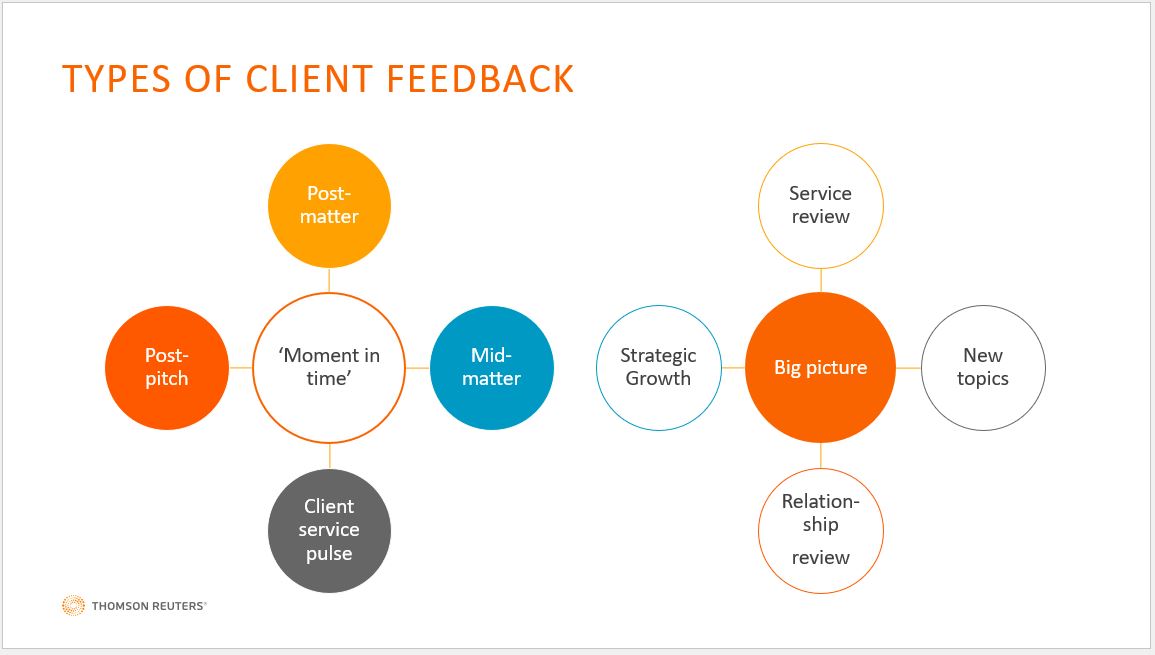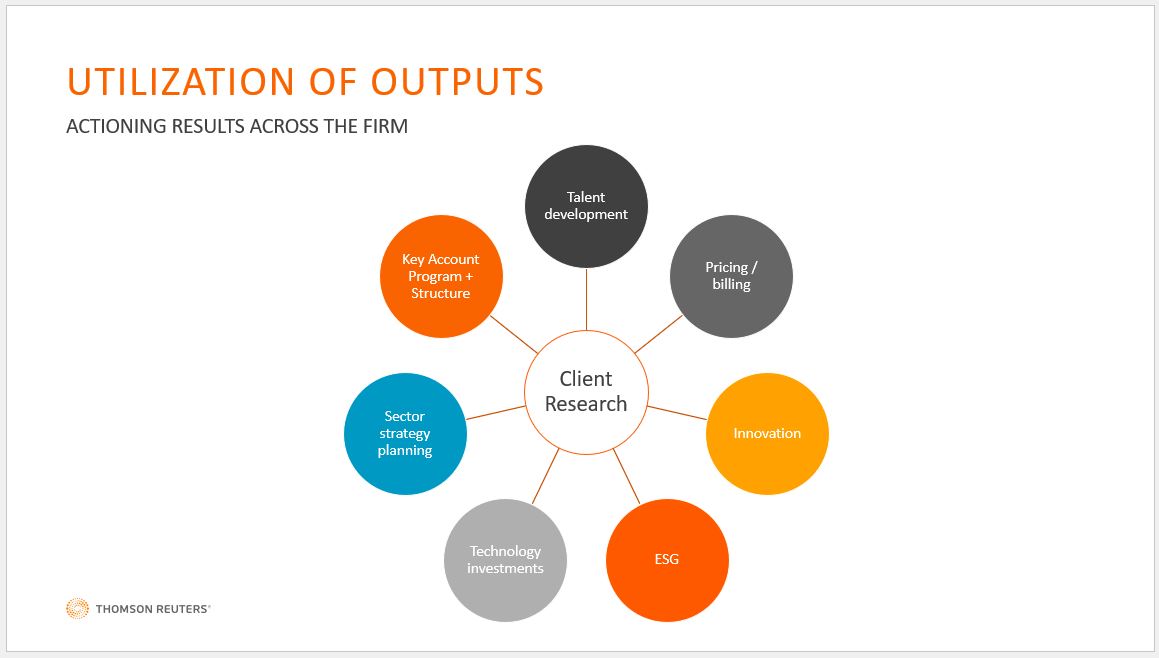Client listening programs can have great benefits for law firms that can find the support within the firm and with clients to implement them
In the first part of this series, we looked at the value that client listening programs can have for the law firms that implement them; now, we will look at the importance of support within the firm and with clients for such programs
One of the most crucial questions around creating a formal client listening program is, simply; How do you convince partners that independent feedback is an important aspect of their regular client relationship meetings? (We often hear push back from partners, saying that “they already do this” and don’t want to bother the clients.)
Yet, effective tactics for driving partner engagement include communicating early and often about the program, involving a carefully selected steering committee, and using partners as champions for the program internally.
One of the best examples of partner engagement shared during our recent webinar series, came from a midsize US law firm that had assembled a steering committee by carefully choosing firm partners for their attributes: the trusted litigator that everyone respects to engender trust in the program; the critical thinking disputes partner who will find the kinks to be ironed out before anyone else; and the head of the firm’s newest practice to bring fresh perspective and signal this is an inclusive firm-wide program.
When the group faced some objections from partners blocking progress early on, we set up a town hall style meeting for partners to hear a brief, 15-minute overview of the program’s goals, plan, and rationale, leaving the rest of the time for a Q&A. This meeting gave partners the chance to see and hear about the program for themselves, ask their questions, and get more comfortable with it. Addressing engagement issues early on is key, of course, but there is a fine line to walk — program creators don’t want to ignore the naysayers, but they should be careful to strike balance between steaming ahead or pandering.
Growing a program
Most firms today say they have a client listening program in place. For some, this is more formal with a project manager, regular reporting, and a systematic approach to selecting clients with a clear plan for action. For others, it’s a handful of Chair-led top client visits held each year. Most firms are somewhere in between, usually clustering toward the “less is less” end of the spectrum.
Webinar attendees said they want to reach more than the average 20% of clients by scaling up their programs and adding more streams of feedback such as post-pitch and post-matter feedback into the overall program. This ramping up of the client listening program takes resource and skills as well as better engagement from partners than may actually exist in many law firms today.

As the graphic above demonstrates, law firms typically start out with a Moment in time periodic measurement of client experience which can provide a valuable baseline of satisfaction and useful insights about how to strengthen individual relationships and competitive advantage.
Once established, they can build on it with Big picture research to gain future-looking insight that will inform strategic growth. For example, one international law firm set out its strategic plan and identified four key areas of growth. We then used client research to test demand and appetite for these four areas within the firm’s existing client base, with our questions focused more on legal spend, assessing the need for certain work types, identifying decision-makers for those work types, and the perception of the firm compared to its competitors. This process, incidentally, hardly touched on client service metrics.
Increasingly, law firms want to learn more about their clients’ own ambitions and needs relating to new or emerging topics like environmental, social, and governance (ESG) initiatives or innovation. These are far-reaching topics that deserve a dedicated research exercise as opposed to one question in a client service review. For example, innovation itself is a great opportunity to design a program around a carefully selected set of clients to whom innovation is a high priority. The program can gather details about their innovation journey, goals and progress, and how well the firm is supporting them, and, conversely, what other firms are doing that is helpful.
Besides getting to understand the client’s perspective on this topic, these interviews deliver a huge amount of competitive intelligence that feeds directly into developing the firm’s innovation proposition and how it communicates that strategy.
Connecting client listening to firm strategy
There are countless ways in which client listening data and insight can be used across the firm — innovation and ESG are just two of them.

To derive the best value from a program requires doing more with the results. To do this, firm leaders first need to ensure they are asking the right questions. Sometimes these questions can be uncomfortable to ask a client, such as about legal spend or the competitors with whom they work; but the value of that information outweighs the awkwardness of asking. Also, this is where working with an independent third party is invaluable. I recall encouraging a nervous managing partner to trust us to ask their clients about their legal spend in order to collect the data that would be instrumental in gathering insight for use in formulating the firm’s five-year strategic plan, which also was a major program objective.
Fast forward to the results presentation, and this same managing partner now had at their fingertips a list of the firm’s Top 200 clients, clients’ typical budget, the proportion allocated to the firm, and whether the client intended to spend more with the firm next year. The data can help demonstrate the value of a listening program which is important in encouraging partner engagement and leadership support for client listening initiatives.
To be successful, client listening should be a strategic priority and managed as a strategic initiative with full and visible support from leadership. When firm leaders talk about the importance of client listening, yet none of their own clients are being invited to participate, is the program really going to be taken seriously throughout the firm?
Much more authentic and convincing is the leader who can admit to their own apprehensions before one of their clients was interviewed and how much they learned about that client after the interview — insights that they were able to use in growing the relationship.
You can learn how to help your firm better determine strategy and demonstrate its value through the use of client listening programs, here.







